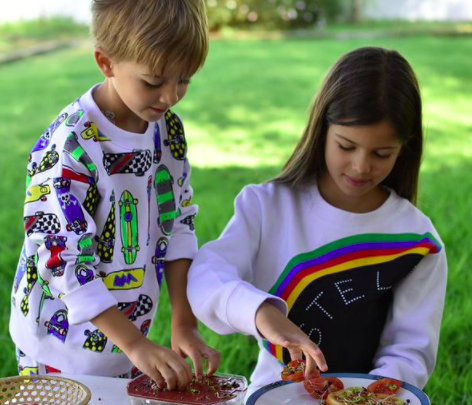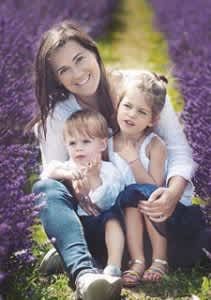Irene Arango is a family and sustainable lifestyle blogger, originally from Spain but now living in London.
She is passionate about organic, plant-based food, sustainable living and getting outside to explore the great outdoors with her husband and two children.
In this post, Irene shares her top tips for living sustainably as a family and encourages anyone who is just at the beginning of their sustainability journey to start small and make changes where they can – small changes can make a big difference!
What is ‘sustainability’?
I think it’s important to define what I think being sustainable is. For me, sustainability is all about making the best possible choice at that particular moment in time. What I mean by this, is that being sustainable, or living sustainably, is not an overnight change. It is a journey and one that will last your whole life.
It is not about throwing everything not sustainable out and replace it with items that are. It’s more about gradually making better choices while we move through life.
I started my own sustainability journey years back with small changes, for example, choosing to buy products without packaging or with packaging that could be recycled, making my own beauty products, eating more fresh and local products and little changes like that.
This does not mean I completely stopped purchasing products that are not sustainably made, as it truly wasn’t possible. But sustainability is not about being radical, it’s about being constant and persistent with the changes and choices you make.
Sustainable Food Swaps
There are small but significant ways in which you can make a sustainable change right now – in your next food shopping trip, choose products packaged in glass instead of tetra bricks (which are difficult to recycle), choose loose vegetables rather than pre-packaged ones and buy local products instead of those that have travelled many miles to be at that supermarket shelf.
That’s it – if you can do that, you have started your sustainability journey. The more you look into products labels and origin, the better choices you can make
As a family, the impact of these little changes can be huge. And the education and knowledge you provide your children regarding these choices will have a long-lasting impact as they will carry this information with them throughout their lives.
Sustainable Clothing Choices
Apart from food, clothing is another big pollutant. It is easy to buy cheap clothing for the kids as they outgrow them so fast, but there is a much bigger benefit in investing in a few good quality organic and sustainable pieces instead.
Good quality clothing will last many years and can be used by many children. The environmental impact of waste clothing is huge, especially with the number of microfibres being used nowadays which are polluting the water, killing marine wildlife and making their way into our own bodies.
It is also important to note, that we have plenty of sustainable and beautiful clothing available now, which we didn’t have 5-10 years ago. It is easier and easier to make the better choice now.
Sustainable Toys for Children
Toys is a very challenging topic when talking about sustainability. This is the one I struggle with the most, especially as the children grow and they make their own choices about what toys they want.
When children are little, it’s easy to always choose wooden toys etc., which are the most sustainable choice. They last for a long time, can be easily passed down or sold and there is a big variety available.
We had almost no plastic toys while the children were little, and what we had, we always purchased second hand. Nowadays, to avoid purchasing popular plastic toys, I encourage the kids to do crafts and to focus on sport activities.
I am not always successful and we do have plastic toys and electronic toys, but as I said, it’s about making small changes and being constant.
These are my main swaps for a more sustainable family living:
– Buy good quality clothing. It will last you for many years and can be even sold again.
– Buy glass jars instead of cans or tetra bricks. They can be re used for storage in your home and glass is more widely recycled as well.
– Homemade cleaning products are the better choice, they have little to no environmental impact, they are cheap to make and better for the family as well. Vinegar and baking soda are cupboard essentials 😉
– Buy wooden or pre loved toys as much as possible while the kids are little. When they grow, limit the number of toys they have and encourage an active and outdoor lifestyle as much as possible.
– Be constant! Small changes that can be sustained are the better choice.





Leave a Comment
You must be logged in to post a comment.